People do not have to be Hercule Poirot to feel like a detective: Budapest fanatics can all be detectives a little bit sometimes. If an old photo appears out of nowhere without an inscription that says where and when it was taken, the research can begin. It is an exciting adventure to explore the past of a place, the history of houses, streets, squares and compare it to the present: what we can see with our own eyes while walking and what is just a memory. With the help of the following five photos, Pestbuda invites its readers to roam in space and time - in Budapest.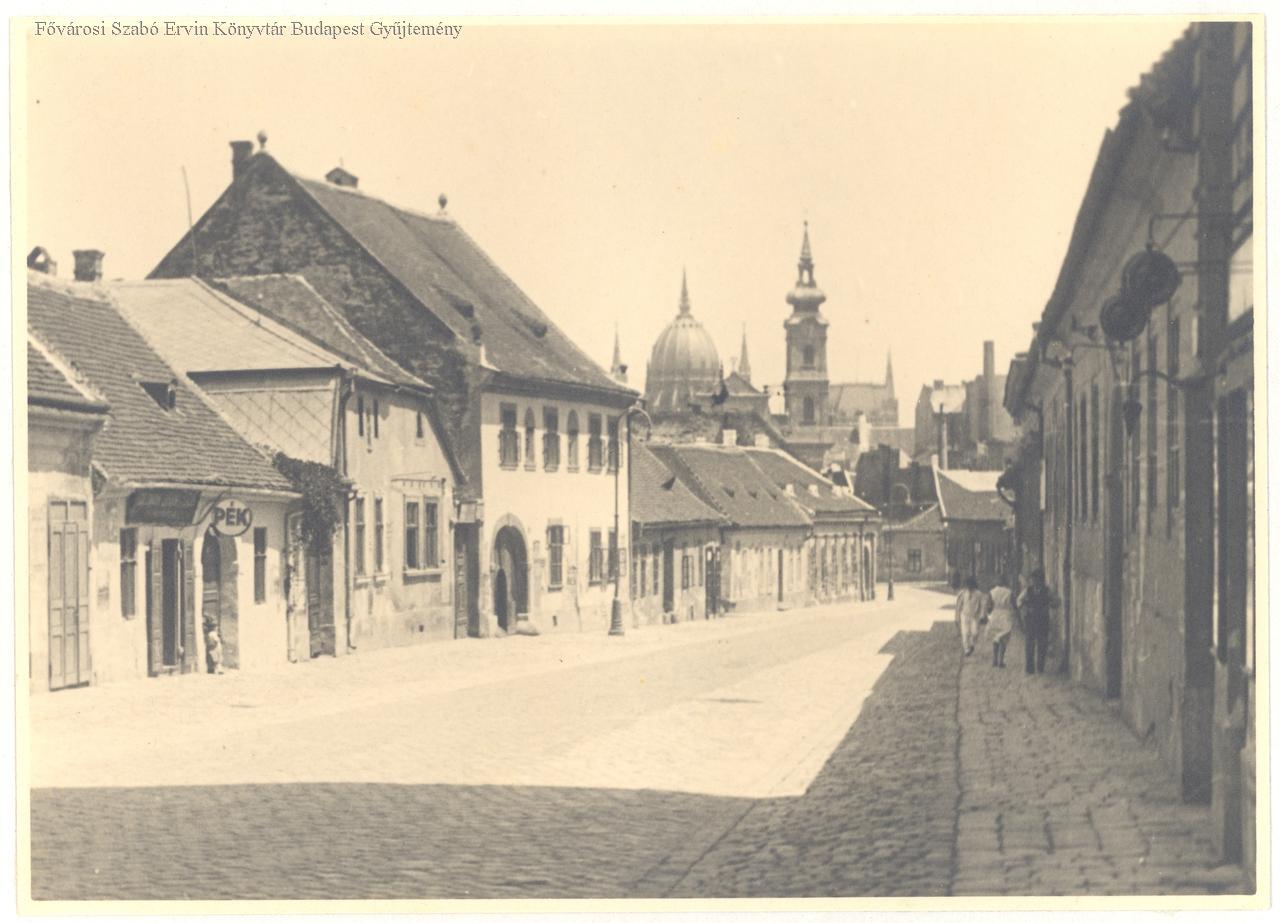
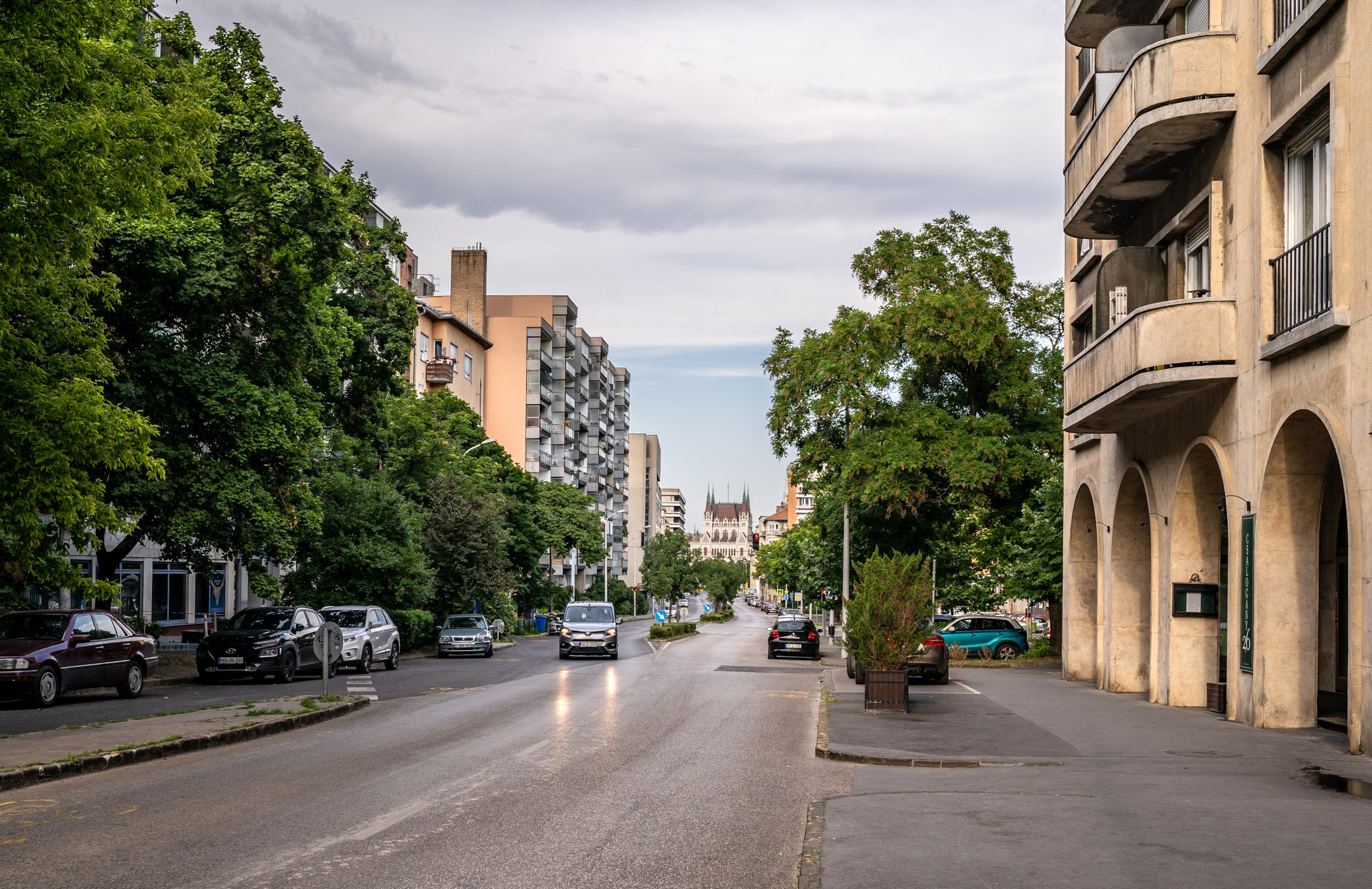
Above: Csalogány Street in the 2nd District in the 1920s, below: the street today. Both pictures show a detail of the Parliament in the background (Photo: FSZEK Budapest Collection; Balázs Both/pestbuda.hu)
The Csalogány Street in the water city showed a completely different picture in the 1920s than it does today: typically single-storey, at most two-storey houses lined up along the paved streets, but in the background two taller buildings emerge, the Parliament and the Church of Stigmatisation of Saint Francis consecrated in 1757. 29 Csalogány Street, which bears the inscription "baker". According to the 1929 almanack of Hungarian industry, the bakery of Sándor and Lajos Goldmann operated here, who in 1921 took over the business founded in 1903 from their father, Antal. The wine house and shop of József Richter operated next to them, in building number 27 (the building one block away in the picture) in the first decade of the 20th century. The buildings damaged in World War II were demolished with the other houses on the street. After the road was widened, modern residential buildings were erected in their place, so today's image of Csalogány Street bears almost no resemblance to its former small-town atmosphere.
%2C%20h%C3%A1tt%C3%A9rben%20a%20B%C3%A9csi%20%C3%BAt%2032.%20sz.%20alatti%20%C3%9Ajlaki%20Sarl%C3%B3s%20Boldogasszony%20templom%20(1756.).jpg)
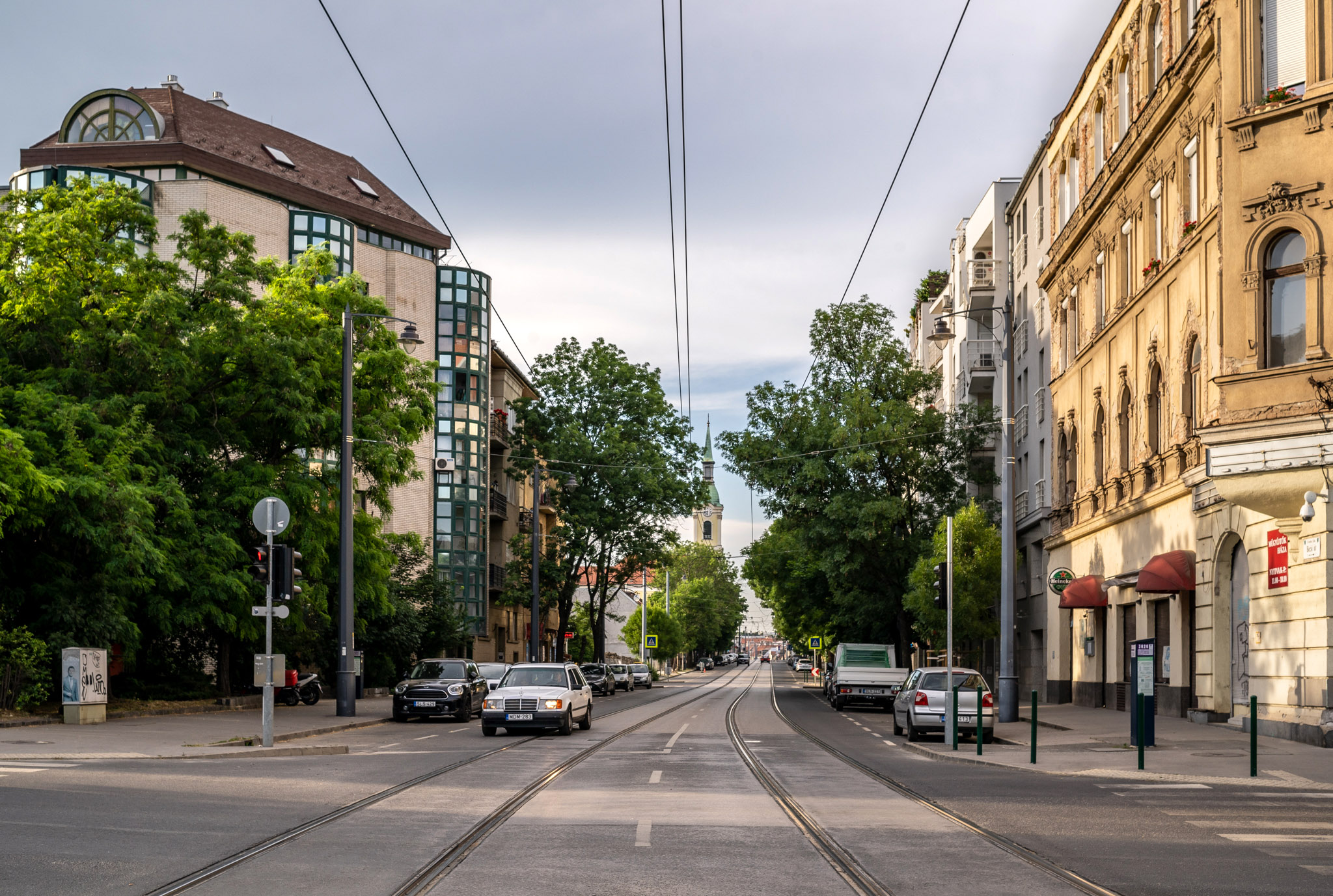
The beginning of Bécsi Road, seen from Zsigmond Square in the early 1900s and the same place today. The tower of the Church of Our Lady of the Visitation in Kolosy Square in the background (Photo: FSZEK Budapest Collection; Balázs Both/pestbuda.hu)
The second picture depicting Bécsi Road can be placed in time by the shop in the foreground: Miklós Halász, a former merchant in Pest, moved his spice shop to 2 Bécsi Road in 1905, on the corner of today's Zsigmond Square, so the photo was taken around the first decade of the 20th century. The store was in a busy place; however, the papers had been writing about insolvency and bankruptcy since 1907, and the 26 February 1908 issue of Pesti Hírlap reveals that Miklós Halász's shop at 2 Bécsi Road was also put up for auction. However, the place remained the family's property, as according to the address book, even in the 1920s, the wife of Miklós Halász, a "spice, paint, colonial goods, general and crop trader", lived here. However, the Church of Our Lady of the Visitation in Újlak, which rises in the background, is well identifiable: the building has been in that place since 1750.
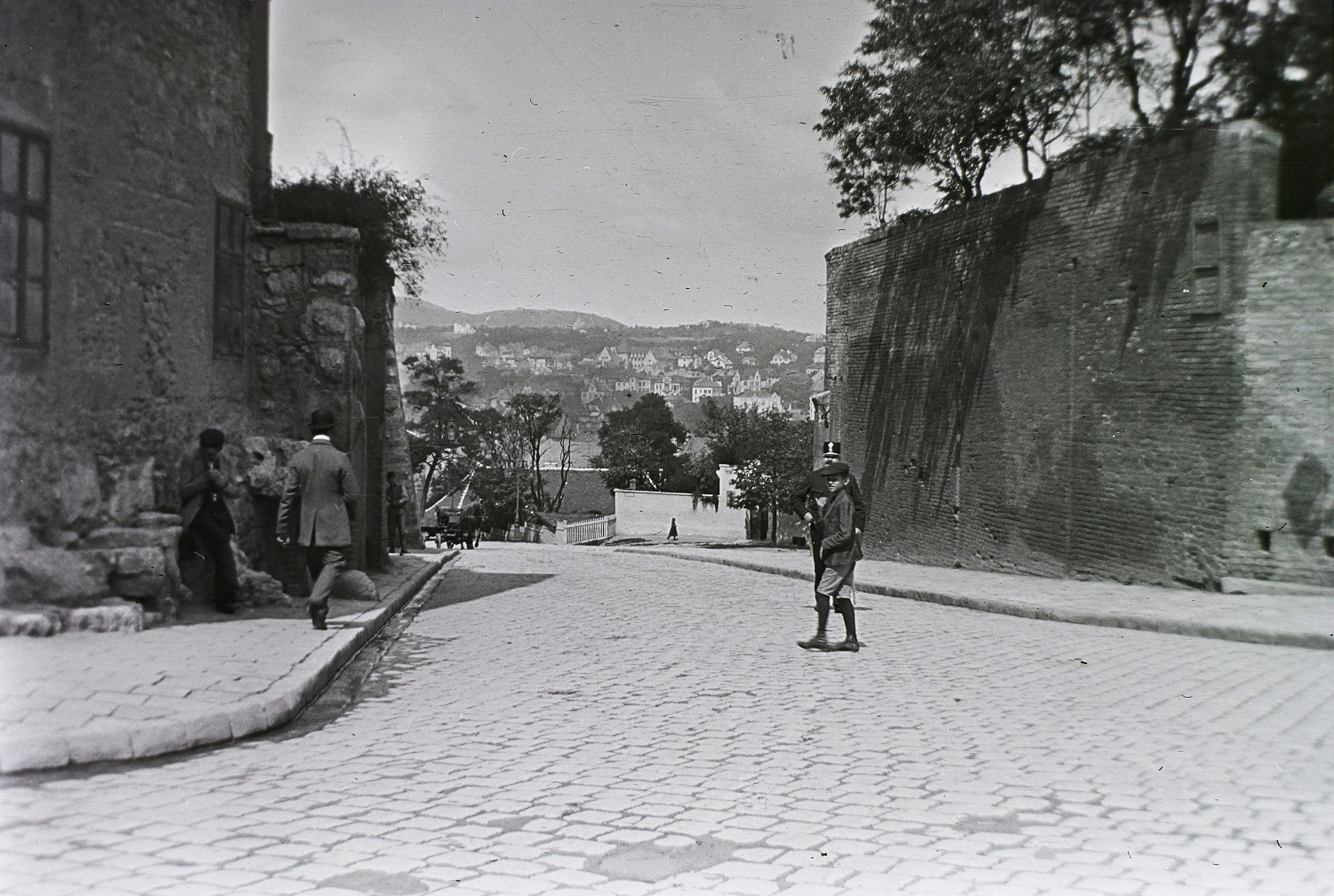
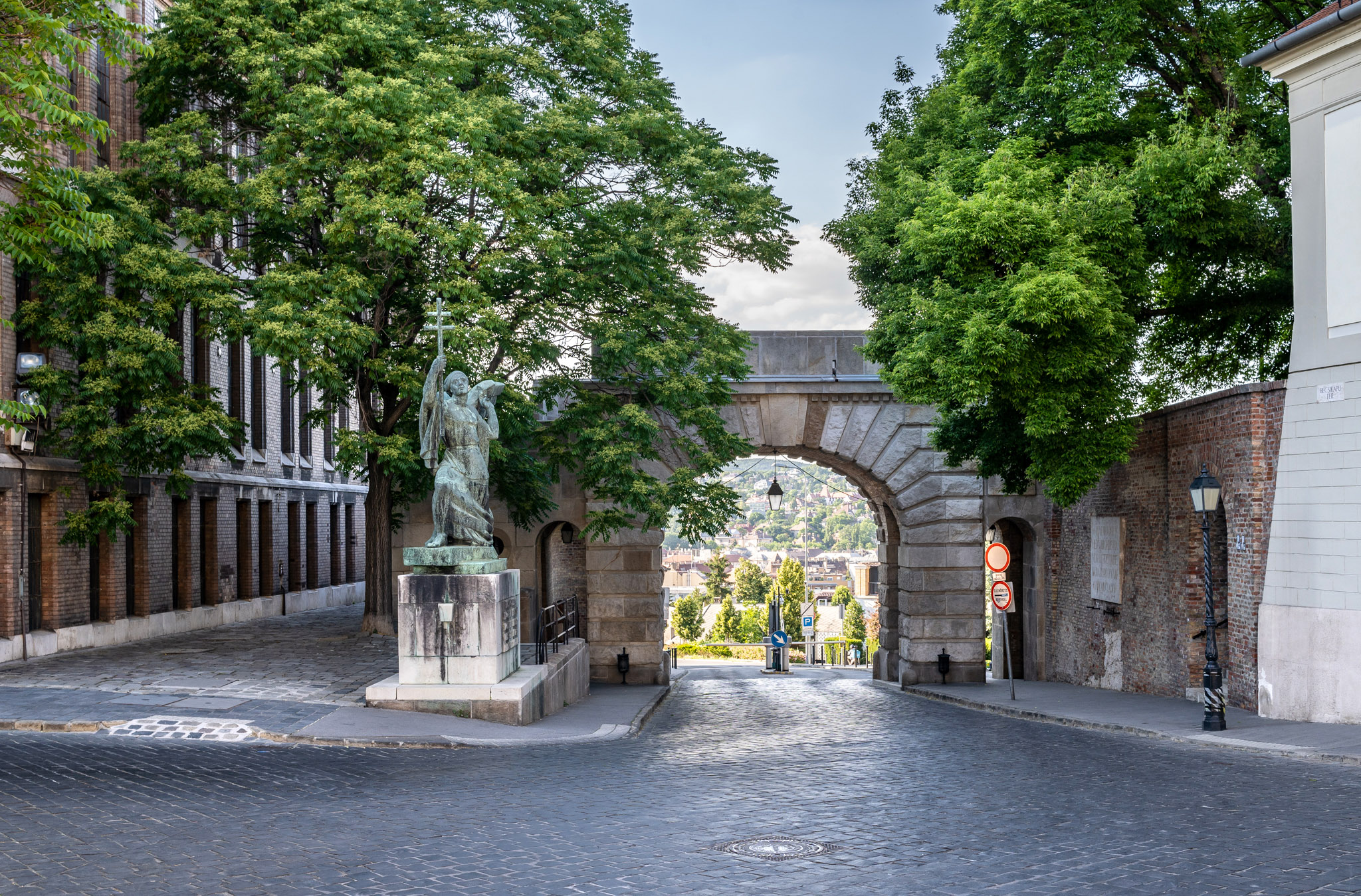
The place of the Bécsi Gate, demolished in 1896, in 1912 and the gate rebuilt in 1936, today (Photo: Fortepan/No.: 86052; Balázs Both/pestbuda.hu)
The Bécsi Gate in the Buda Castle could even be thought of as having a medieval origin, which, despite centuries, stands firmly in place. However, this is a mistake, as the original medieval structure was demolished after the Ottoman rule in 1723, and a new one was built in its place, but it only stood until 1850, when it was also replaced with a new one. Due to the millennium celebrations of 1896, that was also demolished, but at that time, a new one was not made in its place: the northern entrance of the Castle was left without a gate for decades. This period is captured in this unusual photo from 1912. But what is a Castle worth without a gate? Many thought, so in 1936, on the 250th anniversary of the liberation of Buda from the Ottomans, a similar gate to the 1850 one was built according to the plans of Jenő Kismarty-Lechner (nephew of the master of Art Nouveau, Ödön Lechner). That is the gate that can be seen today.
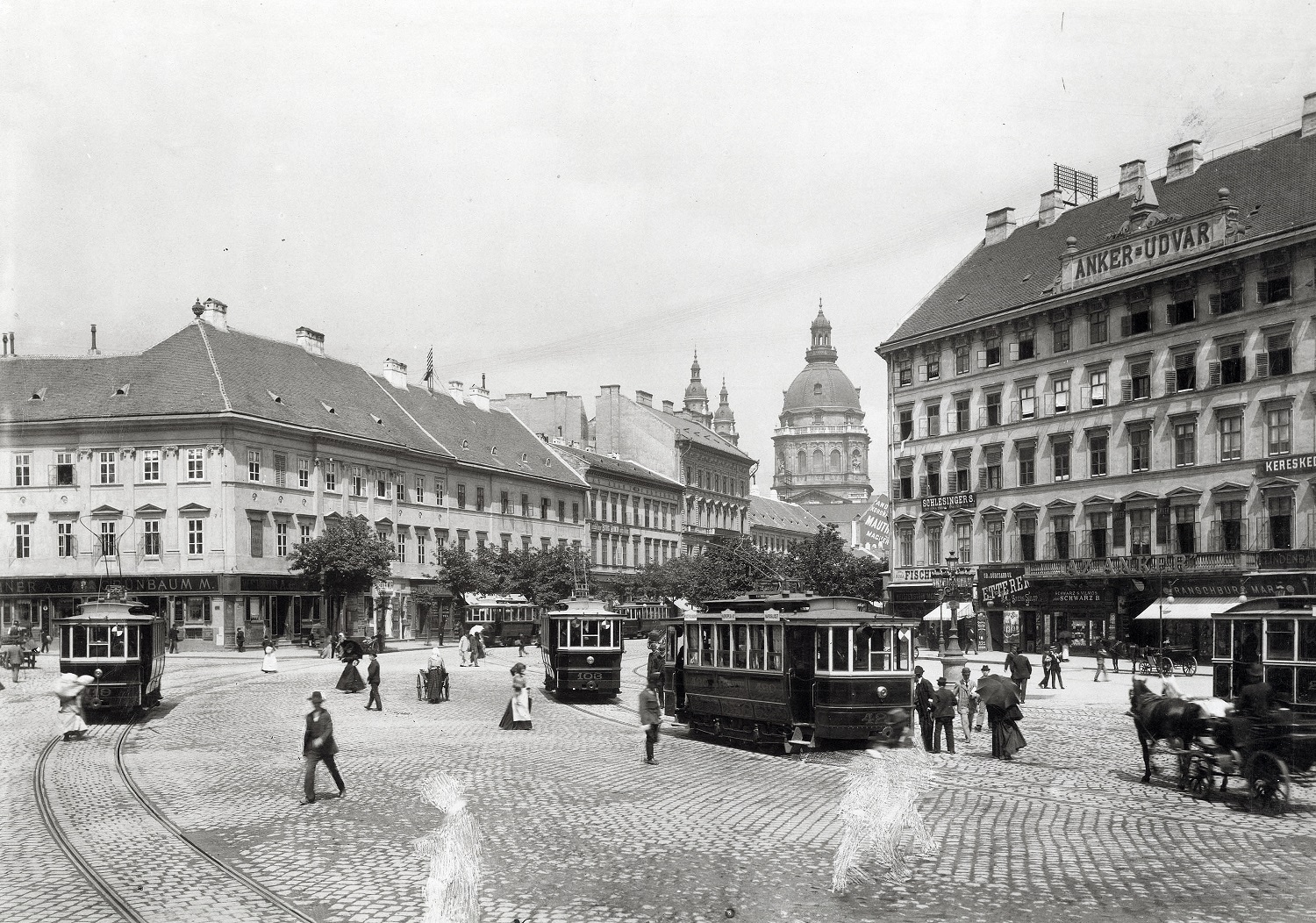
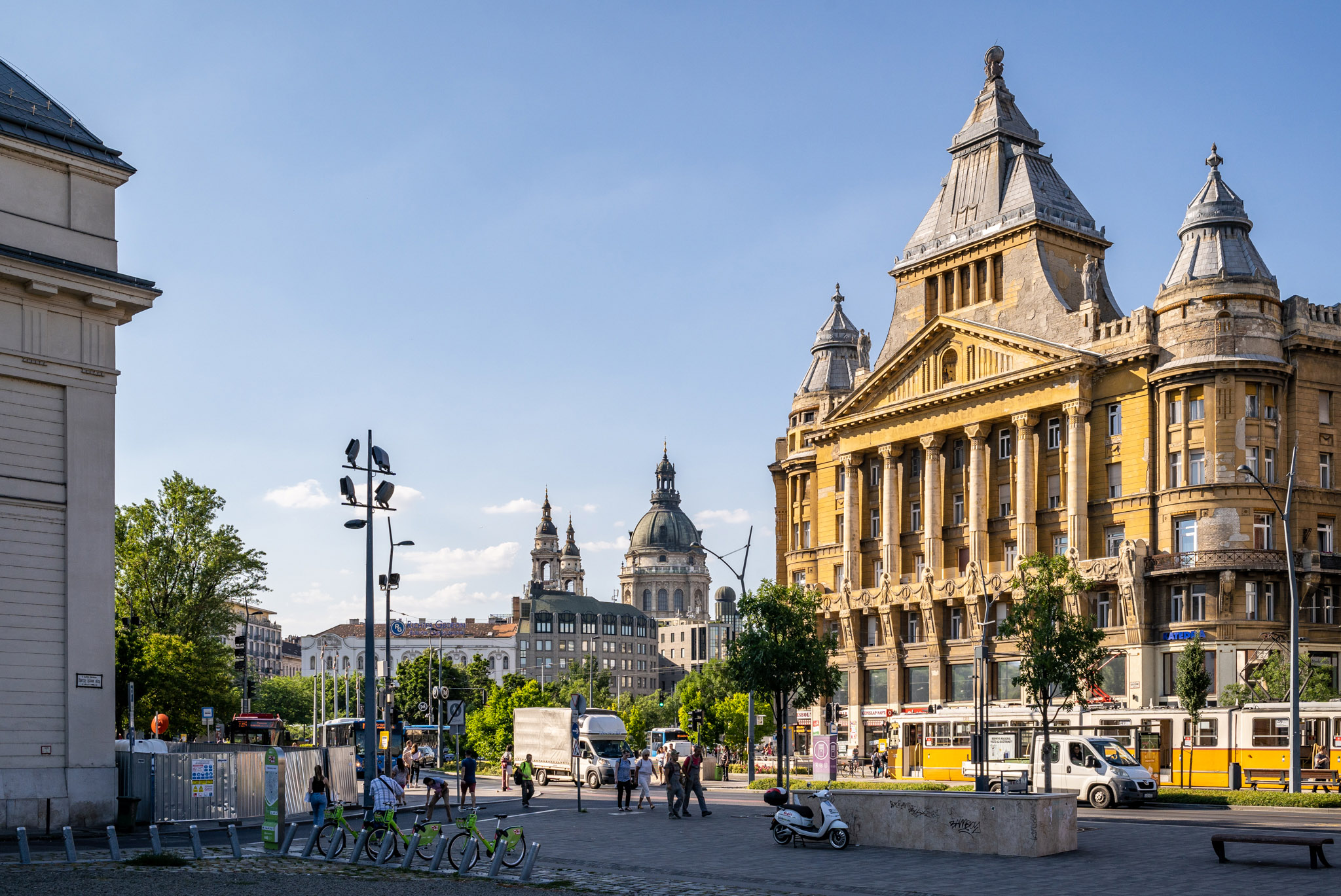
Deák Ferenc Square showed a completely different face in the photo of György Klösz in 1904, but the St. Stephen's Basilica reveals where we stand (Photo: Fortepan/Budapest Archives, Reference No.: HU.BFL.XV.19.d.1.08.147; Balázs Both/pestbuda.hu)
If someone did not know that they were looking at the Deák Ferenc Square, they would hardly know based on the picture taken by György Klösz in 1904. But they still have two points of support: the St. Stephen's Basilica in the middle and the 'Anker' inscription on the house to the right suggest that the photographer may have stood somewhere at the junction of today's Károly Boulevard and Bajcsy-Zsilinszky Road. The Gyertyánffy House, built in the 1860s on the right, was the first four-storey residential building in Pest. The Anker Life and Annuity Insurance Company moved in in 1864. The company built its palace, designed by Ignác Alpár, only in 1908. On the left is the first member of a row of houses demolished after World War II, built at the end of the 18th century and then the "Two Turkish Houses" or Kemnitzer House, which was extended with a second floor in 1822. It was a defining element of Deák Square until its demolition in 1950. During this period, the adjoining houses were also demolished. In their place, they built a parking lot, then a pit, and finally a place of entertainment.
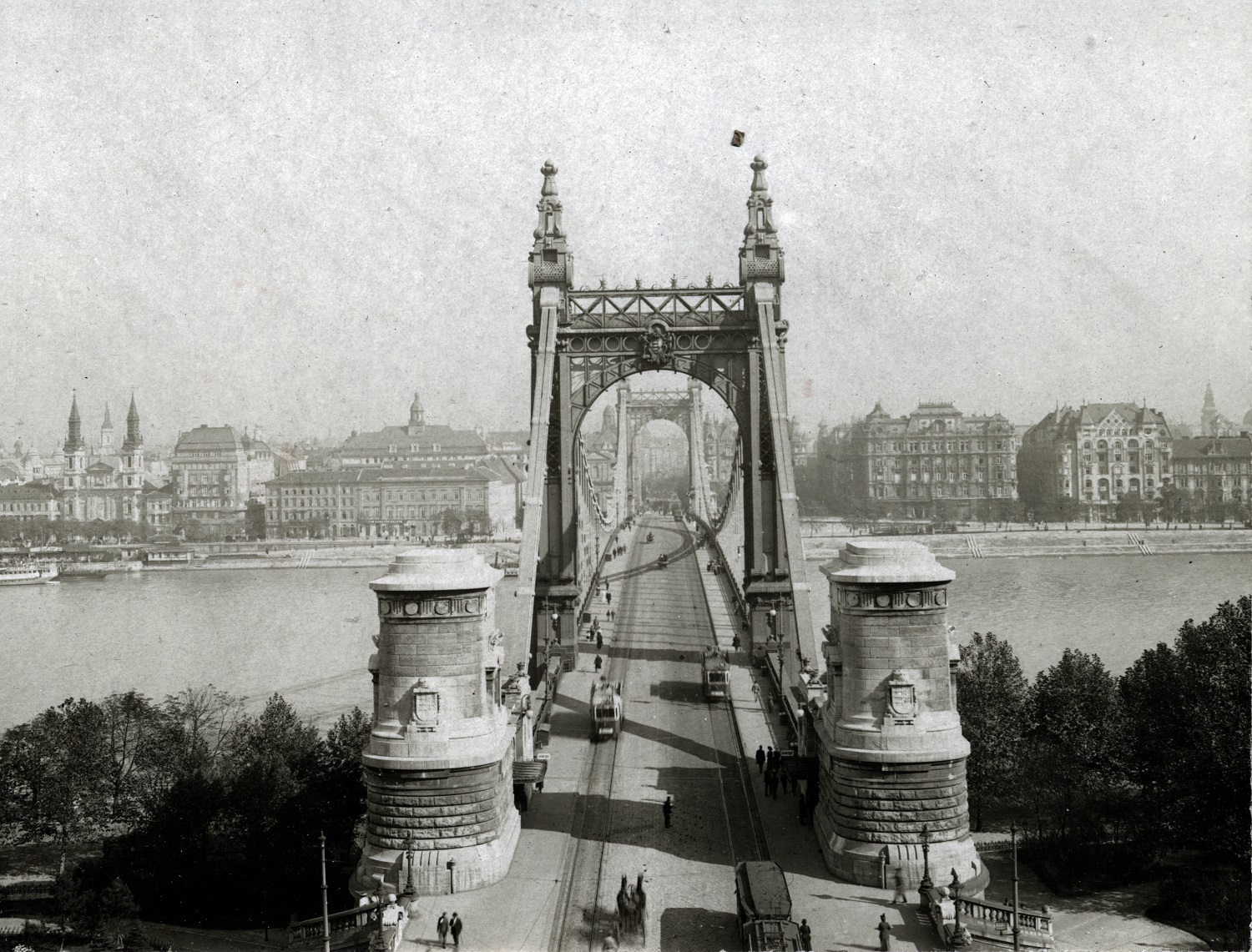
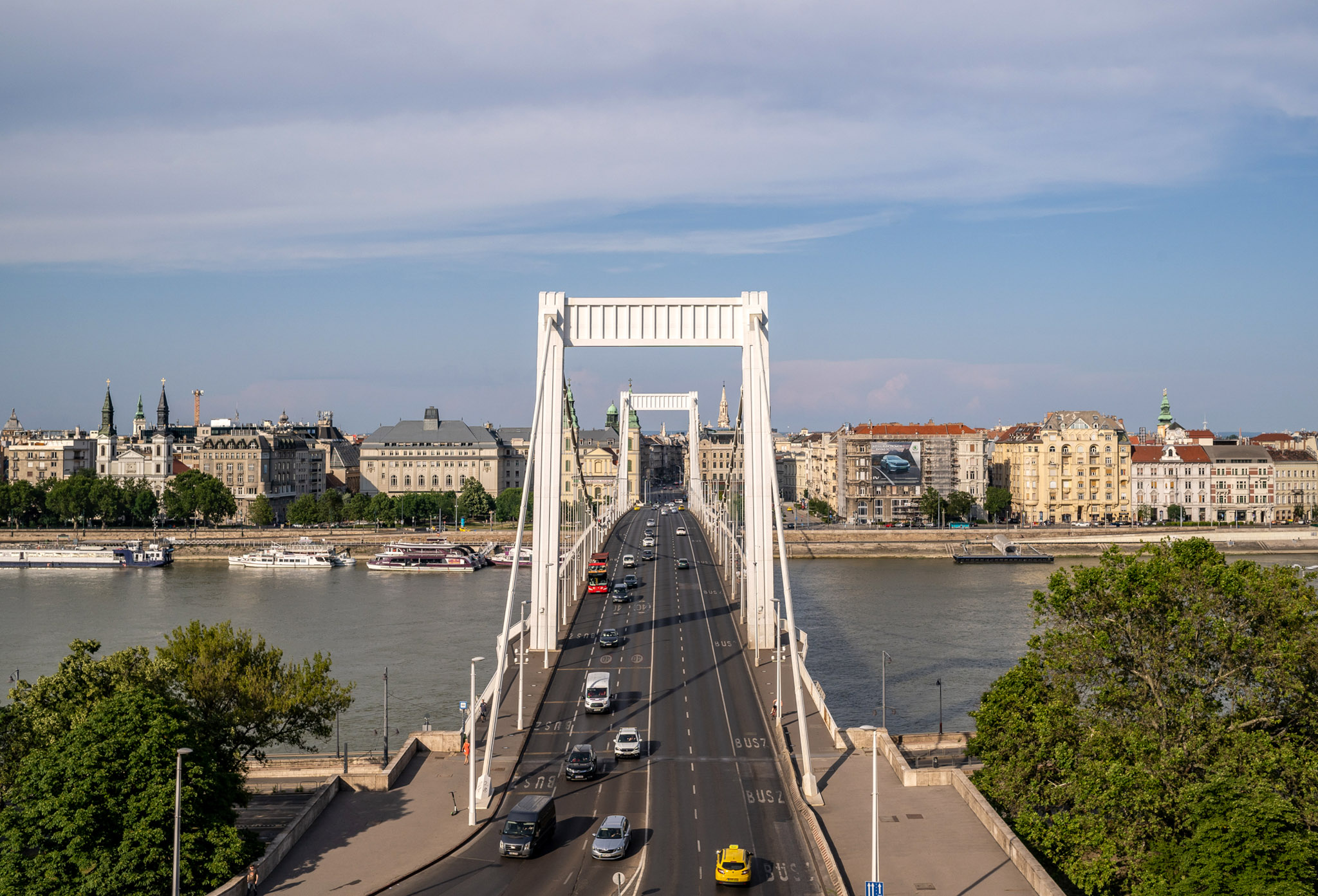
The old Erzsébet Bridge, handed over in 1903, viewed from Gellért Hill in 1913, and the new crossing inaugurated in 1964 (Photo: Fortepan/No.: 151697; Balázs Both/pestbuda.hu)
The old Erzsébet Bridge, designed by Virgil Nagy, Aurél Czekelius, József Beke, István Gálik and Ferenc Gottlieb (all of them working in the bridge department of the Ministry of Trade), was handed over in 1903. The bridge was significantly different in appearance and structure from his successor, designed by Pál Sávoly, which opened in 1964. The 290-metre curve of the original crossing was not held by cables but - like the first Danube bridge in Budapest - by chains and was much narrower than it is today. In addition, its construction required complete urban planning, as neither the Pest nor the Buda side had suitable roads for it, only streets. In Pest, therefore, as a continuation of today's Rákóczi Road, the Hatvani Street running towards the Danube, today's Kossuth Lajos Street, was widened, demolishing the surrounding houses. They were even forced to demolish the historic town hall, and the Inner City Parish Church barely survived. In the case of the latter, in addition to the demolition, the shifting of the building arose, but fortunately, no money was given for the work, so the church was saved and has been standing there ever since, as one of the oldest churches in Budapest.
Cover photo: The old Erzsébet Bridge in 1913 and current crossing nowadays (Photo: Fortepan/No.: 151697; Balázs Both/pestbuda.hu)

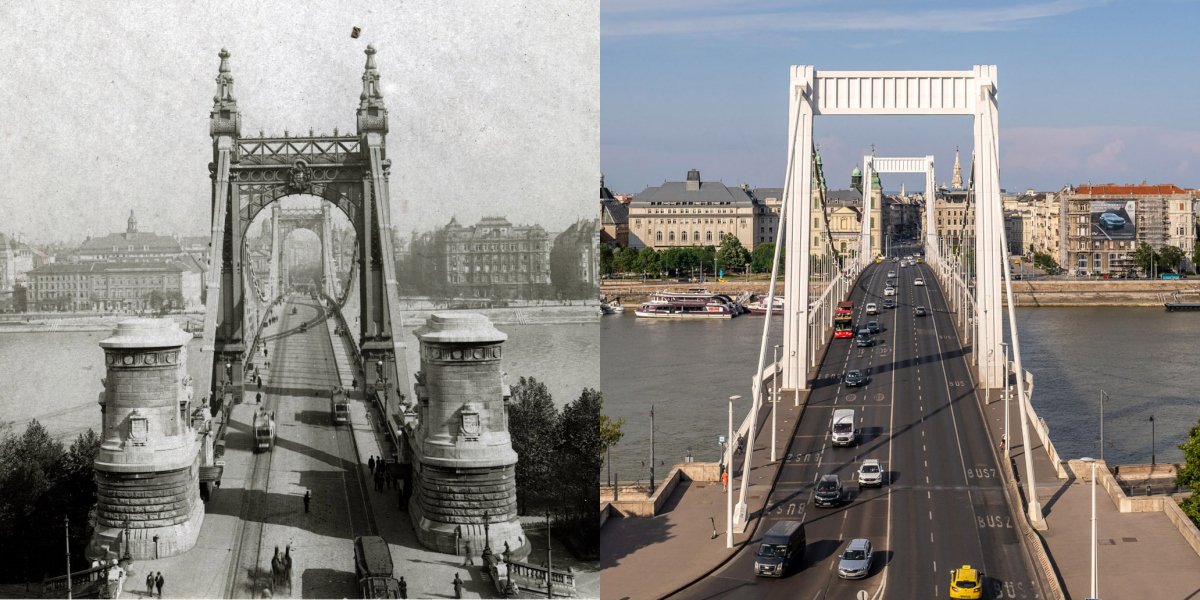



































Hozzászólások
Log in or register to comment!
Login Registration